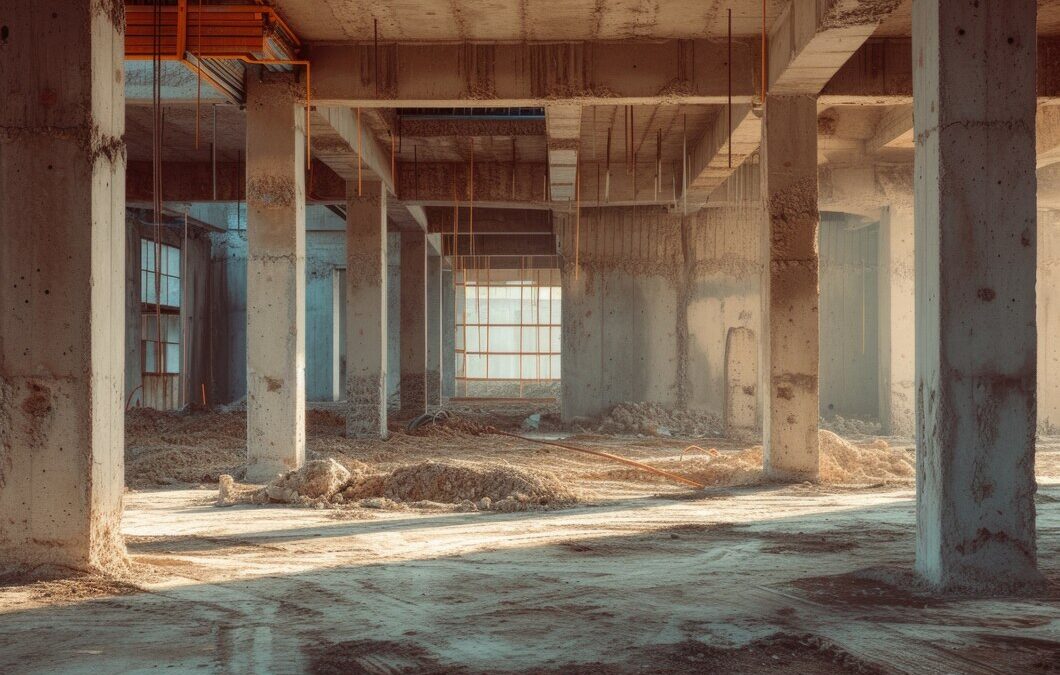A solid foundation keeps your home stable and safe. Recognizing foundation problems early can prevent bigger issues and costly repairs down the road. Even small changes in your home can be signs of foundation trouble. Knowing what to look for can help you catch issues before they get worse.
Many foundation problems start small. A hairline crack in a wall or a door that won’t close right might not seem like a big deal at first. But these could be early warning signs. Watching for these clues helps in taking the first step toward fixing potential problems.
Not everything related to your foundation shows up inside your home. It’s important to keep an eye on the outside as well. Changes in the landscape, gaps in exterior walls, or water gathering near the foundation can hint at problems. With the right awareness and periodic checks, you’ll be better prepared to ensure your home stays on firm ground.
Signs of Foundation Problems
One way to know if your foundation is having issues is by looking closely at your home’s interior. Visible cracks in walls and floors can be a strong indicator that something is off. These cracks often appear near doors, windows, or at the corners of rooms. Small cracks might not seem important, but watch them over time. If they grow or multiply, it’s a sign that the foundation could be shifting.
Sticking doors and windows is another common sign of foundation problems. If you’ve noticed doors or windows that used to open with ease but have become difficult to close, your foundation could be part of the issue. This usually happens when the home is shifting unevenly, putting pressure on the frames.
Sloping or uneven floors can also suggest foundation troubles. If you feel like you’re walking uphill or downhill inside your house, your floors may be tilting because of changes in the foundation.
You can test this by placing a ball on the floor. If it rolls without being pushed, that can indicate uneven flooring and potential foundation issues.
External Clues to Watch For
Keep an eye on the outside of your house for clues that something could be wrong with the foundation. Gaps in exterior trim and bricks can occur when the foundation shifts, pulling apart the structure of the home. If you spot large gaps, it’s time to investigate further.
Changes in the landscape or soil around your house can also affect your foundation. Look for signs like cracked pavement, upheaval in your yard, or unexpected soil movement. These changes might mean that the soil supporting your foundation is unstable, risking foundation damage.
Water pooling near the foundation is another red flag. If rainwater collects around the base of your house instead of draining away, it can lead to erosion or increased pressure against the foundation walls.
Check for puddles or standing water after heavy rain to ensure proper drainage around your home. Proper water management is essential to keeping your foundation safe from water-related issues.
By staying alert to these external signs, you can catch problems early before they lead to significant damage. Keeping a careful watch on both inside and outside the home will help maintain a healthy foundation.
Testing Methods for Homeowners
You don’t need to be an expert to do some basic checks for foundation problems in your home. Start with a level to see if your floors are even. Place the level on different spots around the room and watch the bubble. If it shows unevenness in multiple areas, your foundation might be causing the problem.
Another simple method is measuring gaps around doors and windows over time. Use a ruler to measure any cracks or spaces between window or door frames and the walls. Record these measurements every few months to see if the gaps are growing. Increasing gaps mean the foundation may be moving.
Checking how water drains around your house can also reveal clues. Pour a bucket of water around the home’s perimeter and see how it flows. If water pools near the foundation or doesn’t drain away quickly, it might create stress on your foundation, leading to potential issues.
When to Consult a Professional
Some indicators mean it’s time to call a professional. If you notice large, persistent cracks, or if structural elements like beams or walls are visibly shifting, these are signs of severe problems. Odd noises, like creaking or popping, can also signal that something is wrong.
Professional inspections offer several benefits. Experts have the tools and knowledge to diagnose foundation issues accurately. They can identify things you might overlook and provide detailed reports on your foundation’s health. This way, you make informed decisions about repairs and maintenance.
If a professional inspection points out issues, it’s time to plan for repairs. Addressing foundation problems promptly helps prevent further damage. Get several quotes to understand your options, and choose a trusted service with proven experience to ensure quality repairs are made.
Conclusion
Caring for your home’s foundation is crucial to maintaining its overall integrity. By knowing what to look for and performing simple tests, you can catch potential issues early. Small fixes done in time can prevent the need for extensive and expensive repairs later on.
Remember, foundations don’t usually repair themselves. Being proactive with regular checks helps ensure your home remains safe and secure for years. It also keeps your living environment comfortable and prevents surprise repair bills.
For all your foundation needs, Lift-Texas Construction is here to help. Whether you need an inspection, advice, or foundation repairs, our skilled team is ready to lift your home’s foundation to new heights of dependability. Contact us today and ensure your home stays rooted in safety and security!

